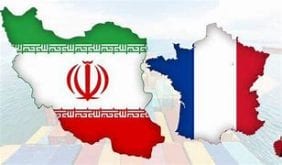Al-monitor – While President Hassan Rouhani focused on Iran’s educated middle class ahead of the May 19 vote, his conservative rivals targeted the poor. Having achieved an impressive victory, Rouhani now faces the challenge of maintaining this enormous asset, namely the Reform and moderation movement. Failing to do so could mean a return of hard-liners to power, as in 2005, when then-Reformist President Mohammad Khatami was succeeded by Mahmoud Ahmadinejad.
AUTHOR Saeid Jafari
In his first campaign documentary, which aired on state television May 3, conservative presidential candidate Ebrahim Raisi tried to concentrate on the vulnerable social classes. The documentary, dubbed “The People’s Concert,” attempted to take the focus off of concert cancellations as a result of pressure by conservative clerics and instead give the sense that jobs and housing are more important. In the documentary, Raisi said, “Are concerts really the people’s problem? Don’t people laugh at us? Our workers are unemployed. They have no bread or homes. And then we talk of concerts?”
In contrast, Rouhani emphasized the values largely espoused by the middle class. His first campaign documentary, which was aired May 6, rather than showing images of villagers, slum dwellers or the vulnerable social classes, began with the topic of free speech and university students voicing their criticisms. He also spoke about the environment and the measures taken by his first-term administration to revive Lake Orumiyeh in northwest Iran or solve the problem of a dust storm in the southwestern province of Khuzestan. In addition, he referred to his administration’s extensive diplomatic exchanges with the world — issues that were all of interest to the youth and the educated middle class. His special focus on this part of society prompted even some of his supporters to charge that his campaign was too elitist.
Yet Rouhani maintained his focus. He repeatedly defended free speech and the idea of women playing an active role in society, while also addressing economic issues, the unemployment crisis and hunger among slum dwellers. Rouhani’s approach prompted concern among some analysts who thought a low turnout among middle-class voters amid a high turnout among poorer voters could spell a win for Raisi.
In fact, the fear of a potential Raisi victory was perhaps one of the determining factors behind Rouhani’s victory. In a May 7 speech in Orumiyeh, Rouhani addressed his rival and said, “Please stop talking of freedom since freedom will be embarrassed. People should be aware that these [individuals] who have come out today aimed to limit [access to] the internet and filter social media networks during the past four years.”
One day later, while delivering a speech in the western city of Hamadan, Rouhani implicitly accused Raisi of wishing to impose gender segregation even in the streets. He said, “In a meeting, they decided to build walls in the streets. They sought to divide the streets for women and men, just like when they issued a circular for gender segregation in their workplaces. You don’t know them; I know them.”
Moreover, two days before the elections, on May 17, Rouhani spoke in the northwestern town of Ardebil, saying, “Today is a decisive day for the nation to either return to an era of sanctions and imprisonment or to move in the path of the future.”
Matin Ghaffarian, a journalist and a doctoral sociology researcher at Tehran University, told Al-Monitor, “Making a definitive statement about each of these two classes’ [voter] participation requires the release of detailed figures. However, based on my personal observations, ‘fear’ played an important role in bringing the middle class to the ballot boxes. One [piece of evidence] of this argument is that [voter] participation levels and candidate selections were [initially] low. When Raisi became the Principlists’ ultimate candidate [after Tehran Mayor Mohammad Bagher Ghalibaf withdrew in the last week of the race], [voter] participation levels rose as well as the number of decisive votes.”
On May 18, Al-Monitor reported on the reasons for why all of Ghalibaf’s votes would not go to Raisi after he withdrew his candidacy, predicting that this could rather benefit Rouhani by leading to a higher turnout among the middle class and so-called gray voters, who, in the Iranian political lexicon, are voters who usually don’t vote but are swing voters whenever they do participate in elections — such as in 2013 when Rouhani was first elected.
Indeed, a look at opinion polls published by the US-based International Perspectives for Public Opinion (IPPO), which accurately predicted Rouhani’s win, is useful in assessing the partisan tendencies of various social classes. According to an IPPO poll published May 18, among university-educated voters, 78% supported Rouhani while only 22% backed Raisi. Another IPPO poll published on the same day predicted that 67% of rural and 73% of urban voters favored Rouhani with only 33% and 27%, respectively, backing Raisi.
In the capital city of Tehran, turnout among the middle class was different than in the Feb. 26, 2016, parliamentary polls. In the 2016 vote, Mohammad Reza Aref, who won most votes in Tehran, received 1.6 million ballots. Rouhani got about 2.7 million votes in the capital alone on May 19. Even Mohsen Hashemi Rafsanjani, the son of late Ayatollah Akbar Hashemi Rafsanjani, won 2.3 million votes in the concurrent City and Village Council elections, coming first in Tehran.
Two conclusions can be drawn from this data. First, the middle class turned out in great numbers on May 19. Second, the lower social classes, which turned out in high numbers in 2013 but participated less in the 2016 parliamentary polls, came out in greater numbers again on May 19.
Indeed, while Rouhani won about 70% of the votes in Tehran, he received far fewer ballots in nearby counties such as Varamin, Shahr Rey, Gharchak and Robat Karim, which are predominantly inhabited by the lower economic and social classes. Yet he received just over half of the votes in those counties, too.
In this vein, Ghaffarian told Al-Monitor, “There is no doubt that the urban middle class voted for Rouhani. However, based on reliable pre-election polls, we know that the lower class also voted for Rouhani in these elections — although a smaller difference is seen between Rouhani and Raisi’s votes in this class than in the middle class. Based on opinion polls conducted by [social scientists] Abbas Abdi and Mohsen Goudarzi, in the upper-class districts, approximately two votes were cast for Raisi for every 14 votes for Rouhani. Meanwhile, in the lower-class districts, two votes were cast for Raisi for every three votes for Rouhani.”
The May 19 elections saw strong voter turnout of 73%, with Rouhani re-elected in the first round of polling. If not given proper attention, disappointed youths and middle-class Iranians could not only collapse the administration, but also create a repeat of what happened to the Reformists in 2005. As such, given his strong reliance on the middle class, Rouhani has no choice but to spend more political capital on practically addressing the concerns of his educated supporters. If not, Iran could very well be looking at the rise of another Ahmadinejad to power.
 Shabtabnews In this dark night, I have lost my way – Arise from a corner, oh you the star of guidance.
Shabtabnews In this dark night, I have lost my way – Arise from a corner, oh you the star of guidance.


